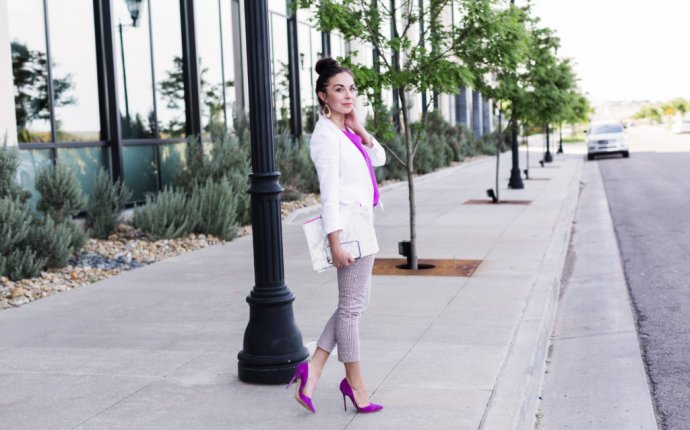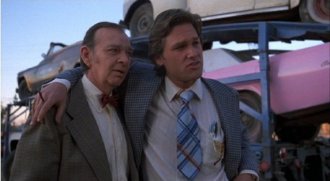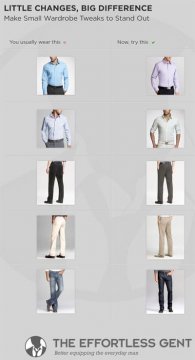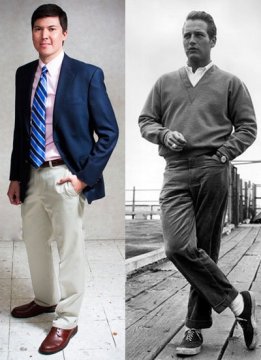
IDEAS for Business Casual Outfits
 The “corporate drone” look is easy to spot: khaki trousers and a white or blue dress shirt. This combination is safe because it’s so common. However if you’re reading this, you’re likely not interested in looking like everyone else. So let’s discuss how small changes in color and pattern can separate you from the “Dilberts” at your office.
The “corporate drone” look is easy to spot: khaki trousers and a white or blue dress shirt. This combination is safe because it’s so common. However if you’re reading this, you’re likely not interested in looking like everyone else. So let’s discuss how small changes in color and pattern can separate you from the “Dilberts” at your office.
Shirt Colors
Start with the dress shirts. White and various shades of blue are the safe standbys we see 95% of men wear. Instead of these, try pastel colors in lavender, yellow, ecru, tan, or pink. These light canvases are easy to match with a wide variety of trousers, ties, and jackets and instantly set you apart in a crowd. But why stop there? Change the solid single-color look for a patterned shirt–stripes are fine for any business casual environment and checks are acceptable in many situations outside of conservative corporations, finance, and the legal profession.
 Trouser Color
Trouser Color
Only light khakis in your wardrobe? Try a deeper brown, olive, or even summer white cotton. Or switch it up with a charcoal gray wool for a dressier look–lightweight wool for the warmer months and flannel in the fall and winter. For the more adventurous man, patterned trousers in a check or small pattern will add a punch of interest to a solid white or blue shirt.
Dark jeans–in a deep, un-faded indigo–may be acceptable in some workplaces, and if they are, they’re a great addition to your wardrobe as they match almost anything. Keep your denim dark, free of distress, and well-fitted.
Leather Accents
 Your day-to-day office wear shouldn’t be restricted to plain black dress shoes and a black belt. Consider a light, buttery brown pair of slip-ons to wear with lighter trousers, and reddish oxblood leather bluchers to wear with your charcoal grey flannel trousers.
Your day-to-day office wear shouldn’t be restricted to plain black dress shoes and a black belt. Consider a light, buttery brown pair of slip-ons to wear with lighter trousers, and reddish oxblood leather bluchers to wear with your charcoal grey flannel trousers.
Step 3: Avoid Cheap Looking Clothing
Notice I’m not saying to avoid inexpensive clothing–there are many bargains to be had out there. But you want to avoid cheap clothing–clothing that contains poor quality fabrics that are uncomfortable, function badly, and make you look like a time traveler from 1973.
Fabric and Texture
A glance at the composition of the clothing is a good starting point. Anything that has a substantial amount of artificial fibers like polyester or rayon–more than 15% or so–is going to develop a slick, plastic-looking sheen over time. It’s also a good sign that the manufacturer was cutting corners. A bit of man-made fiber in the blend, done properly, can strengthen a garment and help with wrinkle and stain-resistance. Large percentages–over 40%–point toward cost-saving measures.
 Know the basic “feel” of the fabric that you’re looking for. Wool garments can range from the coarse, hairy texture of rough tweed to a very smooth worsted finish or a soft, fluffy flannel. Cotton varies depending on thickness and the cotton used–it can be very thin and flimsy-feeling or quite heavy. Varying the textures of your fabrics can help keep your outfits unique from day to day. And, of course, you’ll want thicker, coarser clothing for winter and very light, smooth fabric for summer clothes.
Know the basic “feel” of the fabric that you’re looking for. Wool garments can range from the coarse, hairy texture of rough tweed to a very smooth worsted finish or a soft, fluffy flannel. Cotton varies depending on thickness and the cotton used–it can be very thin and flimsy-feeling or quite heavy. Varying the textures of your fabrics can help keep your outfits unique from day to day. And, of course, you’ll want thicker, coarser clothing for winter and very light, smooth fabric for summer clothes.
If you can, try the clothing on and see how it “drapes”–how the fabric hangs and moves where it isn’t fitted around your body. Walk back and forth in front of a mirror and watch the trouser cuffs, or swing your arms around some to see how the shirt sleeves move. A very billowy, blousy fabric that shifts around at every movement is the sign of a thin, cheaply-made cloth. These tear easily, look saggy, and can even be so see-through that your undershirt will be visible in the right lighting.
Manufacturing Details
Buttons and other fasteners are worth a quick look as well. If the button is plastic, and stitched on so loosely you can wiggle it up and down in the store, you’re not buying a very good piece of clothing. Look at the stitching–is it a single line with 12+ stitches per inch or is it double stitched loosely at 8? Worse is a single loose stitch in areas that will be put under stress–expect these garments to maybe make it through one washing. You want business casual clothing that looks better 6 months after you’ve bought it–this gives you time to really become comfortable and confident in it.









